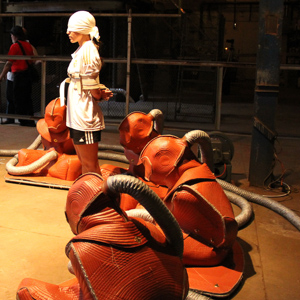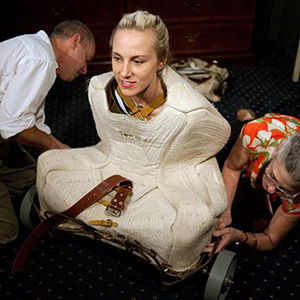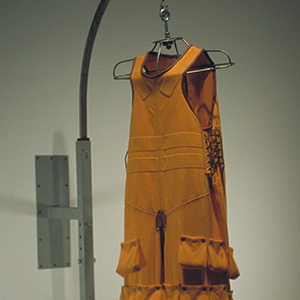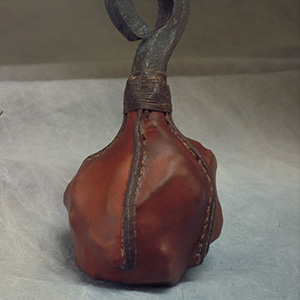I remember the first images of detainees at Camp X-ray, Guantanamo Bay, artfully framed by a single aperture of diamond mesh, 10 prisoners knelt on the gravel, hands encased in mitts, wrists cuffed, mouths, eyes and ears covered. The most unusual thing about the ensemble was the curious bright orange scull-caps, as if they had been dressed for some odd ritual.
There is the question of design; somewhere there in a windowless office there is a beige file cabinet containing the protocols for how these ten men would be presented, dye batch, shoe size, specifications for blackout goggles, noise canceling headphones and etc. It’s not just about the restraints and clothing, but who took the photographs or more importantly who authorized them? What did they mean to communicate with these images?
I could only conclude that this was an attempt to visually remove their eyes, ears, noses mouths and hands, as if they unworthy of humanity, undeserving of our senses, sensations or even for that matter, our air.
The actuality of prisons beyond the reach of domestic law and the attending secrecy raises alarming questions: Are we relieved of the responsibility regarding consent for, or disagreement with the actions of our government? What about the rights of the accused to face one’s accuser or more importantly, the duty of the accuser(s) to confront the accused?



